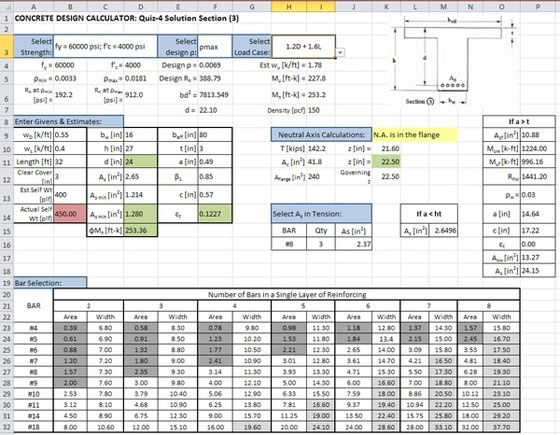Table of Contents
In the world of civil engineering, Excel is a powerful tool that can streamline many tasks, from data analysis to project management and structural calculations. Mastering Excel not only enhances efficiency but also ensures accuracy and precision in engineering tasks. This comprehensive guide delves into the myriad ways Excel can be effectively used in civil engineering.

1. Introduction to Excel Programs in Civil Engineering
Excel is a versatile spreadsheet software that provides numerous functionalities beneficial for civil engineers. From organizing data to performing complex calculations, Excel helps engineers manage various aspects of their projects with ease.
2. Essential Excel Functions for Civil Engineers
2.1 Basic Functions and Formulas
- SUM, AVERAGE, MIN, MAX: Basic statistical functions to summarize data.
- IF Statements: Useful for conditional calculations.
- VLOOKUP and HLOOKUP: For finding data in large datasets.
- INDEX and MATCH: Advanced data lookup methods.
- TEXT Functions: Manipulating text data for reports.
2.2 Advanced Excel Functions
- ARRAY Formulas: Performing complex calculations across multiple cells.
- Solver: Optimization tool for engineering problems.
- Data Validation: Ensuring data integrity.
- Conditional Formatting: Highlighting critical data points.
3. Using Excel for Structural Analysis
3.1 Load Calculations
Excel can be used to calculate different types of loads such as dead loads, live loads, and environmental loads. By setting up formulas and using built-in functions, engineers can automate these calculations.
3.2 Beam Analysis
Engineers can use Excel to perform bending moment and shear force calculations for beams. By creating a spreadsheet model, various load scenarios can be analyzed efficiently.
3.3 Column Design
Excel helps in designing columns by calculating critical parameters like slenderness ratio, buckling loads, and interaction diagrams.

4. Project Management with Excel
4.1 Gantt Charts
Excel’s charting tools can be used to create Gantt charts for project scheduling and tracking. These visual tools help in managing timelines and ensuring project milestones are met.
4.2 Resource Allocation
Using Excel’s data management capabilities, engineers can allocate resources effectively, track usage, and forecast future requirements.
4.3 Budget Management
Excel spreadsheets are ideal for tracking project expenses, forecasting costs, and managing budgets. Using functions like SUMIF and pivot tables, financial data can be analyzed comprehensively.
5. Data Analysis and Visualization
5.1 Data Cleaning and Preparation
Excel provides tools for cleaning and preparing data, ensuring accuracy in further analysis. Functions like TRIM, CLEAN, and SUBSTITUTE are useful for this purpose.
5.2 Statistical Analysis
Engineers can perform statistical analysis using Excel’s Analysis ToolPak, which offers tools for regression analysis, ANOVA, and other statistical tests.
5.3 Visualization Tools
Excel’s charting capabilities, including bar charts, line charts, and scatter plots, help visualize data trends and patterns, aiding in decision-making processes.
6. Using Excel for Environmental Engineering
6.1 Hydrology and Hydraulic Calculations
Excel is extensively used for hydrological and hydraulic calculations, such as stormwater runoff, pipe flow analysis, and water distribution modeling.
6.2 Environmental Impact Analysis
Engineers can use Excel to perform environmental impact analyses, modeling pollutant dispersion and assessing ecological risks.
7. Tips and Tricks for Maximizing Excel Efficiency
7.1 Keyboard Shortcuts
Learning keyboard shortcuts can significantly speed up tasks in Excel. Some useful shortcuts include:
- Ctrl + C / Ctrl + V: Copy and paste.
- Ctrl + Z / Ctrl + Y: Undo and redo.
- Ctrl + Shift + L: Toggle filters.
7.2 Custom Templates
Creating custom templates for frequently used calculations or reports can save time and ensure consistency across projects.
7.3 Macros and VBA
Automating repetitive tasks with Macros and VBA (Visual Basic for Applications) can enhance productivity. Engineers can write custom scripts to automate complex workflows.
8. Case Studies
8.1 Case Study 1: Bridge Load Analysis
A civil engineering firm used Excel to perform a comprehensive load analysis for a new bridge project. By setting up detailed spreadsheets with load calculations and stress analysis, the firm was able to optimize the design and ensure safety standards were met.
8.2 Case Study 2: Construction Project Management
A construction company managed its project schedules and budgets using Excel. By developing a detailed Gantt chart and resource allocation plan, the company successfully completed the project on time and within budget.

9. Future Trends
9.1 Integration with Other Software
The integration of Excel with other engineering software (like AutoCAD, Revit, and STAAD.Pro) is enhancing its capabilities, allowing for seamless data transfer and more comprehensive analyses.
9.2 Cloud Computing
With the advent of cloud computing, Excel files can now be accessed and edited collaboratively in real-time, improving communication and efficiency in project management.
10. Conclusion
Excel is an indispensable tool in civil engineering, offering robust capabilities for calculations, data analysis, project management, and more. By mastering Excel, civil engineers can enhance their productivity, accuracy, and efficiency, ultimately leading to more successful projects.
By leveraging the power of Excel, civil engineers can tackle a wide range of tasks with increased precision and efficiency. This guide has highlighted key functions, applications, and tips for using Excel effectively in civil engineering. Whether you’re performing structural analysis, managing projects, or conducting environmental studies, Excel offers the tools you need to succeed.
